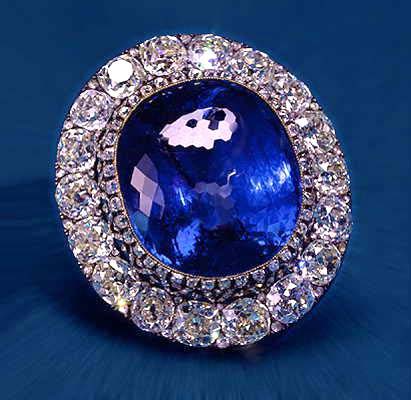LEGENDARY GEMS OF SRI LANKA: WORLD TREASURES FROM THE ISLAND OF JEWELS
1.GIANT OF THE ORIENT
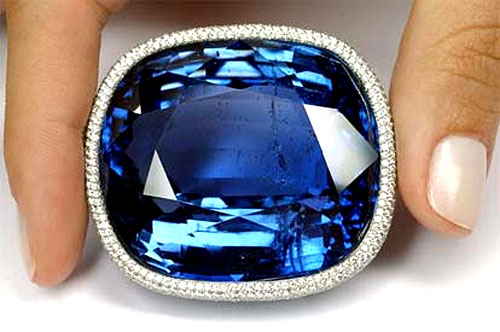
In 1902, a giant blue sapphire was reportedly discovered near Adam’s Peak in Sri Lanka. The leading exporter at the time, O.L.M. Macan Marker & Co, purchased the rough stone, which weighed over 600 carats. A local cutter worked on the gem, transforming it into a 466-carat cushion-cut sapphire with an impressive cornflower-blue hue. At the time, it was one of the largest faceted blue sapphires of its kind, known for its intense medium blue color with full saturation and a striking orange-red fluorescence under ultraviolet light.
In 1902, the stone was valued at $7,000. Dubbed the “Giant of the Orient,” the sapphire remained out of the public eye for nearly a century. In 1907, it was sold to an anonymous American collector and stayed hidden until it resurfaced in Christie’s Magnificent Jewels auction catalog in May 2004.
Some experts believe the stone had a 20-carat discrepancy, which Christie’s auction catalog noted. This could have been due to an error in the measuring equipment of the time or a simple recording mistake. Although the sapphire failed to sell at auction, Christie’s later received an offer and sold it to an anonymous British buyer. The stone has not been seen publicly since.
2.LOGAN BLUE SAPPHIRE
In 1902, a giant blue sapphire was reportedly discovered near Adam’s Peak in Sri Lanka. The leading exporter at the time, O.L.M. Macan Marker & Co, purchased the rough stone, which weighed over 600 carats. A local cutter worked on the gem, transforming it into a 466-carat cushion-cut sapphire with an impressive cornflower-blue hue. At the time, it was one of the largest faceted blue sapphires of its kind, known for its intense medium blue color with full saturation and a striking orange-red fluorescence under ultraviolet light.

3.BLUE BELLA OF ASIA
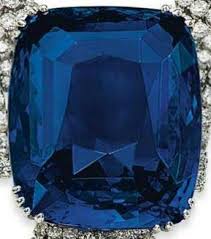
The Blue Belle of Asia, a highly coveted 400-carat cornflower blue sapphire, was discovered in a paddy field in Ratnapura in 1926. The term “belle” highlights the exceptional beauty of this magnificent gem, which was once owned by Lord Nuffield of Britain. The Blue Belle resurfaced at Christie’s Auction in Geneva, Switzerland, where it had been recut to 395.52 carats and set in a stunning diamond necklace. In 2014, it sold for $17.29 million, setting a record as the highest price ever achieved for a sapphire at auction.
4.BLUE BELLA OF ASIA
The Blue Belle of Asia, a highly coveted 400-carat cornflower blue sapphire, was discovered in a paddy field in Ratnapura in 1926. The term “belle” highlights the exceptional beauty of this magnificent gem, which was once owned by Lord Nuffield of Britain. The Blue Belle resurfaced at Christie’s Auction in Geneva, Switzerland, where it had been recut to 395.52 carats and set in a stunning diamond necklace. In 2014, it sold for $17.29 million, setting a record as the highest price ever achieved for a sapphire at auction.
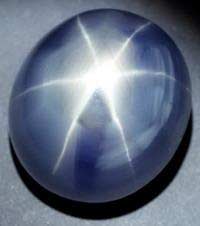
5.GRAYISH BLUE STAR INDIA

India does not have record of producing sapphire of this size in a long time and the puzzling question was how it got the name as star of India. The possible explanation was that the time the stone was found the Sri Lanka was under rule and Administered by the British East Indian company from Madras in India. The India being the proud and largest British administrated country known to the world, took the liberty of announcing the gem as the property British East Indian company which stuck to the name of the stone. The spectacular star sapphire is currently being housed in the hall of J.P. Morgan at American Museum of Natural History.
6.BLACK PRINCE RUBY/SPINEL
This 170 carat red spinel is an extraordinary piece with a unique history that included the Black Prince Ruby. Though all the red transparent thought to be ruby in Monarch periods, the recent technological advancement revealed this as a Red Spinel. Eye catching uncut red spinel has been owned by the British family since 1367. The estimated value equivalent to GBP 10 Million in 2016.
Although the origin was unconfirmed it is believed to be originated from either Sri Lanka or Tajikistan. Richard III is also reported to have worn the Black Prince Spinel in his helmet at the Battle of Bosworth Field where he died. It now forms the centerpiece of the imperial state crown of Great Britain and is exhibited in the tower of London.

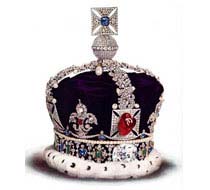
7.EMPRESS MARIA'S SAPPHIRE
